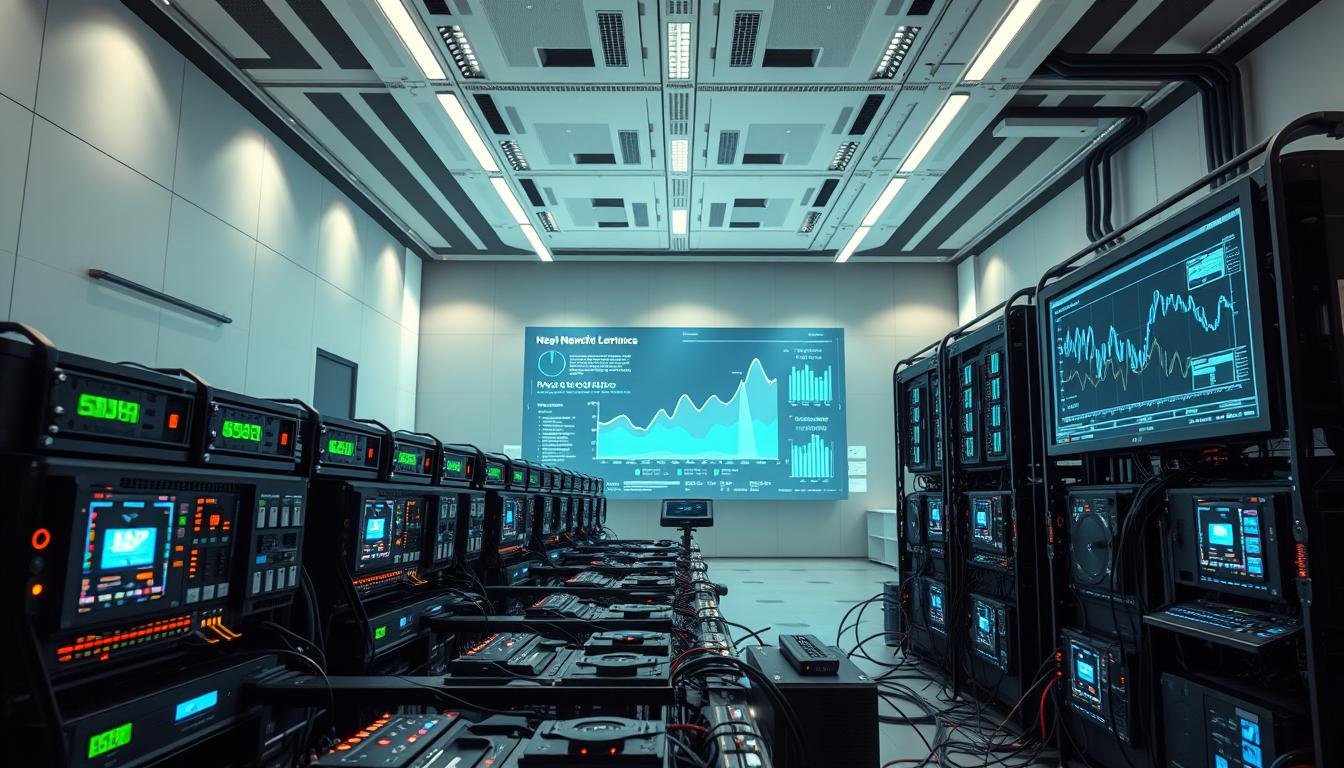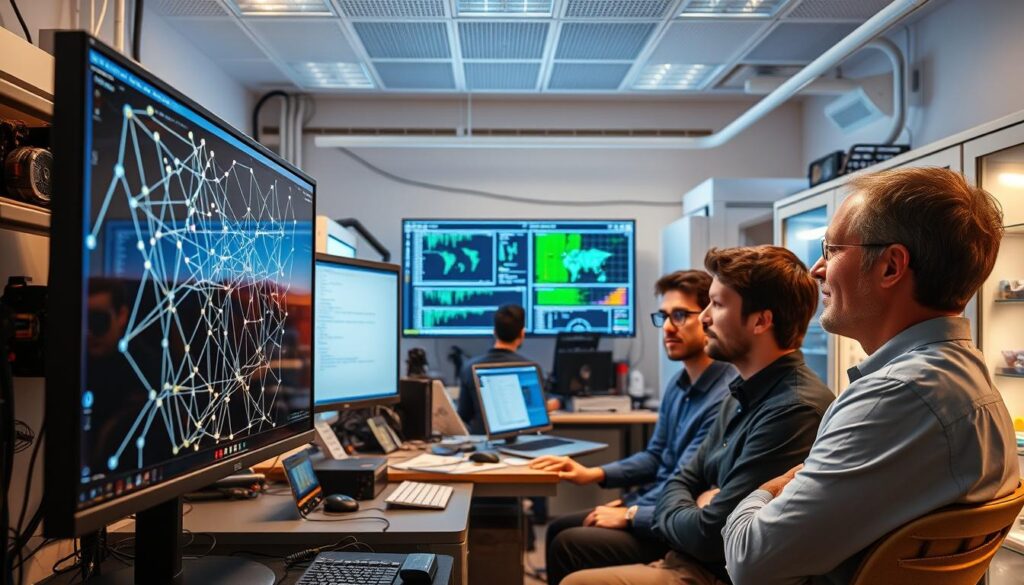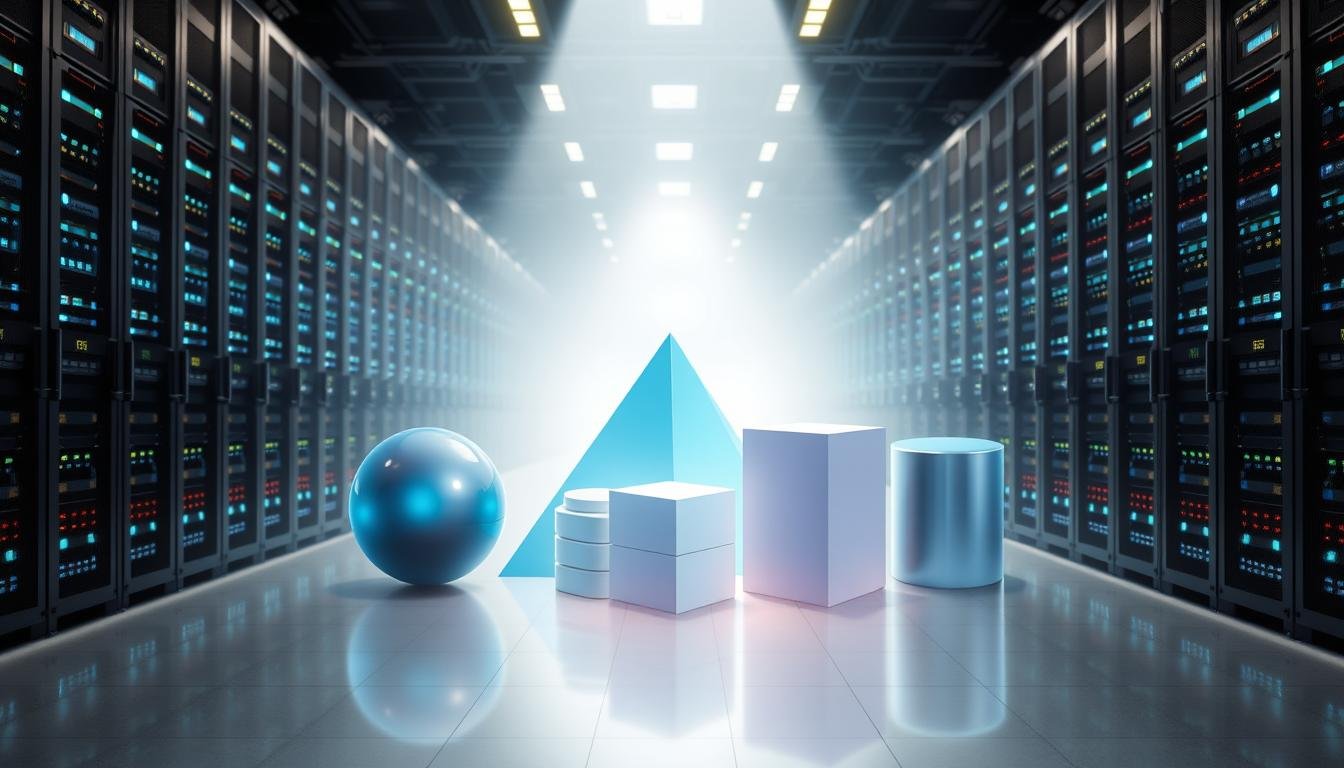Have you ever wondered how complex systems learn to make decisions with such precision? The answer lies in the training process, a critical step in developing effective models. Without proper training, even the most advanced systems can fail to deliver accurate results.
Challenges like overfitting, underfitting, and computational complexity often arise. These issues can hinder performance and limit practical applications. However, modern solutions such as batch normalization and adaptive optimizers have revolutionized the field.
From healthcare to autonomous systems, these techniques are transforming industries. This guide will walk you through everything from foundational concepts to advanced strategies. Whether you’re a beginner or an expert, there’s something here for everyone.
Key Takeaways
- Training is essential for developing accurate and reliable models.
- Overfitting and underfitting are common challenges in the process.
- Modern solutions like batch normalization improve performance.
- Adaptive optimizers help manage computational complexity.
- Practical applications span healthcare, autonomous systems, and more.
Understanding Neural Networks Training
Training is the backbone of any successful model, but what does it really involve? At its core, it’s about optimizing weights to minimize errors. This process ensures the model can make accurate predictions based on the data it’s given.
What is Neural Network Training?
Training involves adjusting the parameters of a model to reduce errors. Think of it like a mountain climber finding the best path down. The climber takes small steps, guided by the slope, to reach the bottom efficiently. Similarly, gradient-based learning adjusts weights step by step to minimize errors.
Why is Training Neural Networks Challenging?
One major challenge is the interdependence of parameters in multi-layer architectures. Changing one weight can affect others, making optimization complex. Additionally, models with 12,000+ parameters face significant computational hurdles. The curse of dimensionality further complicates high-dimensional optimization, as the search space grows exponentially.
Foundational Concepts in Neural Network Training
Building a reliable model starts with understanding the basics of data handling. Proper data management ensures accurate predictions and minimizes errors. This section covers essential concepts like dataset splitting, overfitting, underfitting, and the bias-variance tradeoff.
Dataset Splitting: Train, Validation, and Test Sets
Dividing your dataset into three parts is crucial for effective model development. Typically, 70-80% of the data is used for the training set, while the remaining is split between validation and test sets. This approach helps evaluate the model’s performance on unseen data.
In resource-constrained scenarios, cross-validation is a practical alternative. It involves rotating subsets of data for training and validation, ensuring robust evaluation without needing a separate test set.
Overfitting and Underfitting
Overfitting occurs when a model performs well on the training set but poorly on new data. This happens when the model learns noise instead of patterns. Underfitting, on the other hand, means the model fails to capture the underlying trends, resulting in high error rates.
Visualizing loss curves can help identify these issues. Divergence between training and validation loss indicates overfitting, while consistently high errors suggest underfitting.
The Bias-Variance Tradeoff
Balancing bias and variance is key to building an effective model. High bias leads to underfitting, while high variance causes overfitting. Polynomial regression is a classic example of this tradeoff. Simple models may have high bias, while complex ones risk high variance.
Improper dataset management can lead to real-world consequences, such as inaccurate predictions or wasted resources. Mastering these foundational concepts ensures your model performs optimally in practical applications.
Core Techniques for Improving Neural Network Training
What makes a model perform at its best? The answer lies in mastering core techniques that enhance its capabilities. From fine-tuning parameters to leveraging advanced tools, these methods ensure optimal results.
Hyperparameter Tuning
Hyperparameter tuning is essential for achieving the best model performance. Two common methods are grid search and random search. Grid search evaluates all possible combinations, while random search samples randomly, saving time and resources.
Choosing the right learning rate is critical. Too high, and the model may overshoot the optimal solution. Too low, and it may take too long to converge. Proper tuning ensures the model learns efficiently.
Advanced Optimizers: Adam, RMSprop, and SGD
Optimizers like Adam, RMSprop, and SGD play a key role in model optimization. Adam combines momentum and adaptive learning rates, making it highly effective. RMSprop adjusts the learning rate based on recent gradients, while SGD is a simpler, foundational method.
For example, the AdamW optimizer improves weight decay, enhancing performance. These tools help manage complex models, ensuring faster and more reliable training.
Transfer Learning
Transfer learning is a powerful method for improving models, especially with small datasets. It involves using pre-trained models like those from ImageNet and adapting them to new tasks. This approach saves time and computational resources.
There are two main strategies: feature extraction and fine-tuning. Feature extraction uses the pre-trained model as a fixed feature extractor, while fine-tuning adjusts its layers to better fit the new data. Both methods significantly boost performance.
Weight Initialization Techniques
How do models start their learning journey effectively? The answer lies in weight initialization. Properly setting initial weights ensures the system learns efficiently and avoids common pitfalls like slow convergence or instability.
Xavier Initialization
Xavier initialization, also known as Glorot initialization, is designed for systems with activation functions like sigmoid or tanh. It calculates initial weights based on the number of input and output nodes in a layer. This method ensures the variance of outputs remains consistent across layers, preventing vanishing or exploding gradients.
The formula uses a uniform or normal distribution scaled by the square root of the fan-in and fan-out. This approach works well for systems with balanced input and output dimensions.
He Initialization
He initialization is tailored for systems using ReLU activation functions. It adjusts the variance of initial weights by a factor of 2/n, where n is the number of input nodes. This adjustment accounts for ReLU’s non-linearity, ensuring stable learning.
For deeper systems, He initialization prevents gradients from vanishing, making it a popular choice for modern architectures.
Practical Considerations for Weight Initialization
Choosing the right initialization method depends on the system’s architecture and activation function. For ReLU-based systems, He initialization is often the best choice. For sigmoid or tanh systems, Xavier initialization works well.
Additionally, consider the type of layer. Convolutional layers may require different initialization strategies compared to fully connected layers. A flowchart can help select the appropriate method based on system requirements.
Proper initialization sets the stage for effective learning, ensuring the system performs optimally from the start.
Batch Normalization: A Key to Stable Training
What if there was a way to make learning faster and more stable? Batch normalization is a technique designed to achieve just that. By standardizing the inputs to each layer, it reduces internal covariate shift, ensuring smoother and more efficient learning.
How Batch Normalization Works
Batch normalization works by normalizing the outputs of a layer using the mean and variance of the current batch. This process involves two learnable parameters, γ and β, which scale and shift the normalized values. This ensures the model retains its flexibility while maintaining stability.
During training, the running average of mean and variance is updated. In inference mode, these running averages are used instead of batch statistics, ensuring consistent performance.
Benefits of Batch Normalization
One of the biggest advantages is the 14x improvement in convergence speed. This means models reach optimal performance much faster. Additionally, it reduces the need for careful initialization and allows for higher learning rates.
Batch normalization also helps mitigate issues like vanishing or exploding gradients, making it easier to train deeper models. This stability is crucial for achieving consistent results.
Practical Considerations for Batch Normalization
Batch size plays a significant role in the effectiveness of normalization. Smaller batches can lead to unstable estimates of mean and variance, while larger batches provide more reliable normalization.
In PyTorch, the BatchNorm1d module simplifies implementation. Here’s an example:
import torch.nn as nn
batch_norm = nn.BatchNorm1d(num_features=64)
Understanding these practical aspects ensures you can leverage batch normalization effectively in your projects.
Regularization Techniques to Prevent Overfitting
Preventing overfitting is crucial for building reliable and accurate models. Overfitting occurs when a model performs well on the training data but fails on new, unseen data. Regularization techniques help address this issue by adding constraints to the learning process.
L1 and L2 Regularization
L1 and L2 regularization are two common methods to prevent overfitting. L1 regularization, also known as Lasso, promotes sparse feature selection by adding the absolute value of weights to the loss function. This helps eliminate less important features.
L2 regularization, or Ridge, adds the squared value of weights to the loss function. It shrinks weights without eliminating them entirely, making it ideal for models with many features. Both methods reduce the error on unseen data by penalizing large weights.
Dropout: Randomly Deactivating Neurons
Dropout is a technique that randomly deactivates neurons during training. For example, a 50% dropout rate means half the neurons are turned off in each iteration. This prevents the model from relying too heavily on specific neurons, enhancing generalization.
During inference, all neurons are active, but their outputs are scaled by the dropout rate. This ensures consistency between training and inference phases. Dropout is particularly effective in deep models with many layers.
Early Stopping: Halting Training at the Right Time
Early stopping monitors the model‘s performance on a validation set during training. If the validation error stops improving or starts to increase, training is halted. This prevents the model from overfitting to the training data.
Tools like TensorBoard can help visualize validation loss and detect plateaus. Early stopping is a simple yet effective way to balance training time and model performance.
Data Augmentation: Enhancing Dataset Diversity
How can we make datasets more diverse and robust for better performance? Data augmentation is the answer. It involves creating new samples from existing data to improve the model‘s ability to generalize. This technique is especially useful when the original dataset is limited or lacks variety.
Traditional Data Augmentation Techniques
Traditional methods include rotation, flipping, and scaling. These techniques are label-preserving, meaning they don’t alter the original labels of the data. For example, in medical imaging, rotation and flipping are limited to avoid distorting critical details.
These methods are simple yet effective. They help the model learn from different perspectives of the same samples, reducing the risk of overfitting.
Advanced Data Augmentation: Mixup and Cutout
Advanced techniques like Mixup and Cutout take augmentation further. Mixup combines two samples by blending their features and labels. This label-mixing approach encourages the model to learn more robust patterns.
Cutout, on the other hand, simulates occlusion by randomly removing parts of an image. This helps the model focus on the entire object rather than specific features. Both methods significantly enhance training effectiveness.
Implementing Data Augmentation in PyTorch
PyTorch makes it easy to apply these techniques. The torchvision.transforms module provides tools for both traditional and advanced methods. Here’s an example:
import torchvision.transforms as transforms
transform = transforms.Compose([
transforms.RandomHorizontalFlip(),
transforms.RandomRotation(10),
transforms.Cutout(size=16)
])
This code applies horizontal flipping, rotation, and Cutout to the data. Such implementations ensure your model benefits from diverse and robust training datasets.
Optimization Methods for Neural Network Training
What drives the efficiency of models in achieving accurate results? The answer lies in optimization methods, which fine-tune the learning process. These techniques ensure models converge faster and perform better on diverse tasks.
Gradient Descent: The Foundation of Optimization
Gradient descent is the backbone of most optimization techniques. It works by iteratively adjusting weights to minimize the error. The process calculates the gradient of the loss function and updates parameters in the opposite direction.
Full-batch gradient descent uses the entire dataset for each update, ensuring precise steps. However, it requires significant memory and computational resources. Minibatch gradient descent strikes a balance by using smaller subsets of data, reducing memory requirements while maintaining efficiency.
Stochastic Gradient Descent (SGD)
SGD takes minibatch optimization further by using a single data point per iteration. This approach introduces noise, which can help escape local minima. However, it also leads to less stable convergence compared to minibatch methods.
Nesterov momentum enhances SGD by anticipating future updates. This adjustment reduces oscillations and speeds up convergence. It’s particularly useful for complex models with high-dimensional data.
Adam Optimization: Combining Momentum and Adaptive Learning Rates
Adam stands out as a versatile optimization method. It combines momentum with adaptive learning rates, ensuring efficient updates. The algorithm uses exponential moving averages (EMA) to track gradients and squared gradients, adjusting parameters dynamically.
Key hyperparameters like β1 and β2 control the decay rates of these averages. Proper tuning ensures stability and faster convergence. Adam’s adaptability makes it a popular choice for tasks like ImageNet training, where it consistently delivers strong performance.
Learning rate warmup strategies further enhance Adam’s effectiveness. Gradually increasing the learning rate during initial iterations prevents instability, ensuring smoother training.
Learning Rate Scheduling
What if adjusting the pace of learning could drastically improve results? Learning rate scheduling is a powerful technique that controls how quickly or slowly a model adapts during training. By optimizing this process, you can achieve faster convergence and better performance.
Fixed Learning Rate vs. Adaptive Learning Rate
A fixed learning rate remains constant throughout training. While simple, it can lead to inefficiencies. If the rate is too high, the model may overshoot the optimal solution. If too low, it may take too much time to converge.
Adaptive learning rates, on the other hand, adjust dynamically based on the model’s performance. Methods like Adam and RMSprop automatically scale the learning rate, ensuring smoother and faster optimization.
Cyclical Learning Rates
Cyclical learning rates vary between a minimum and maximum value over time. This approach, often implemented with a triangular policy, helps the model escape local minima and achieve super-convergence. The one-cycle policy is a popular variant that combines cyclical rates with a warmup phase.
To determine the optimal range, perform a learning rate range test. This involves training the model with increasing rates and observing the error curve. The ideal range is where the error decreases steadily.
Practical Tips for Learning Rate Scheduling
Start with a small learning rate and gradually increase it during the warmup phase. Use cosine annealing or step decay schedules to fine-tune the rate over time. Monitor the model’s performance on a validation set to avoid overfitting.
Here’s an example of implementing a one-cycle policy in PyTorch:
from torch.optim.lr_scheduler import OneCycleLR
scheduler = OneCycleLR(optimizer, max_lr=0.1, steps_per_epoch=len(train_loader), epochs=10)
By carefully scheduling the learning rate, you can significantly enhance your model’s efficiency and accuracy.
Loss Functions: Measuring Model Performance
How do we measure the effectiveness of a model’s predictions? The answer lies in loss functions, which quantify the difference between predicted and actual values. These functions are essential for evaluating and improving model performance.
Mean Squared Error (MSE)
Mean Squared Error (MSE) is a common loss function for regression tasks. It calculates the average squared difference between predicted and actual values. Lower MSE indicates better accuracy. Here’s how to implement it in PyTorch:
import torch.nn as nn
mse_loss = nn.MSELoss()
MSE is sensitive to outliers, making it ideal for tasks where large errors need to be penalized heavily.
Cross-Entropy Loss
Cross-Entropy Loss is widely used for classification tasks. It measures the difference between predicted probabilities and actual labels. Label smoothing is a technique that prevents overconfidence by slightly adjusting the labels. This improves generalization, especially in cases of class imbalance.
For hard-to-classify examples, focal loss is an effective alternative. It reduces the weight of easy examples, focusing the model on challenging cases.
Choosing the Right Loss Function for Your Model
Selecting the appropriate loss function depends on the task. For regression, MSE or Huber loss is often suitable. Huber loss is robust to outliers, making it a good choice for noisy data. For classification, Cross-Entropy Loss or focal loss works best, especially with imbalanced datasets.
Here’s a template for creating a custom loss function in PyTorch:
def custom_loss(output, target):
loss = (output - target).abs().mean()
return loss
By understanding and applying the right loss function, you can significantly enhance your model’s performance.
Backpropagation: The Engine of Neural Network Training
What powers the learning process in complex systems? The answer lies in backpropagation. This technique is the backbone of how systems adjust their parameters to minimize errors. By propagating errors backward through the network, it ensures accurate predictions.
How Backpropagation Works
Backpropagation relies on the chain rule from calculus. It calculates the gradient of the loss function with respect to each parameter. These gradients are then used to update the weights in each layer of the system.
Computational graphs visualize this process. Each node represents an operation, and edges show the flow of data. This makes it easier to trace how errors propagate backward.
Challenges in Backpropagation
One major issue is the vanishing gradient problem. In deep systems, gradients can become extremely small, slowing down learning. LSTMs address this with their constant error carousel mechanism, maintaining stable gradients over time.
Another challenge is memory usage. Gradient checkpointing reduces memory by storing only a subset of intermediate values during the forward pass. This trades off memory for recomputation during the backward pass.
Improving Backpropagation Efficiency
Mixed-precision training is a powerful method. It uses lower precision for certain calculations, speeding up the process without sacrificing accuracy. This is particularly useful for large-scale systems.
Tools like PyTorch’s autograd profiler help identify bottlenecks. By analyzing the time spent on each operation, you can optimize the system for better performance.
These advancements ensure backpropagation remains efficient, even as systems grow in complexity.
Hardware Platforms for Neural Network Training
What hardware powers the most advanced systems in the world today? From GPUs to TPUs and FPGAs, the right hardware can drastically improve training efficiency and performance. Each platform offers unique advantages, making it essential to choose the best fit for your needs.
GPUs: Accelerating Training with Parallel Processing
GPUs, like NVIDIA’s A100, excel at parallel processing. They handle thousands of tasks simultaneously, reducing training time significantly. CUDA, NVIDIA’s programming model, optimizes these operations for maximum efficiency.
For multi-GPU setups, model parallelism splits the workload across devices. This approach ensures even large models can be trained efficiently. GPUs are ideal for tasks requiring high computational power, such as image and video processing.
TPUs: Google’s Tensor Processing Units
TPUs, designed by Google, are optimized for machine learning workloads. They use a custom instruction set architecture, enabling faster matrix operations. Benchmarks show TPU v4 outperforming GPUs in specific tasks, especially those involving large datasets.
Quantization-aware training further enhances TPU performance. By reducing precision, it speeds up computations without sacrificing accuracy. TPUs are a top choice for cloud-based machine learning applications.
FPGAs: Reconfigurable Hardware for Custom Architectures
FPGAs offer flexibility by allowing users to design custom architectures. They are highly power-efficient, making them suitable for edge deployment. Unlike GPUs and TPUs, FPGAs can be reprogrammed for different tasks, providing versatility.
However, FPGAs require specialized knowledge to program. They are best suited for applications where power efficiency and adaptability are critical, such as IoT devices and real-time processing systems.
Choosing the right hardware depends on your specific needs. GPUs offer raw power, TPUs excel in cloud environments, and FPGAs provide flexibility. Understanding these options ensures optimal performance for your projects.
Cloud Platforms for Neural Network Training
Where can you find the most powerful tools to train advanced systems? Cloud platforms have become essential for scaling training processes, offering flexibility and high performance. From Amazon EC2 to Google Collaboratory and Azure NVv4, these platforms provide the resources needed to handle complex models efficiently.
Amazon EC2: Scalable GPU Instances
Amazon EC2 offers scalable GPU instances, such as the P3 series, designed for intensive training tasks. With options for spot and on-demand pricing, users can optimize costs based on their needs. Spot instances are ideal for flexible workloads, while on-demand ensures uninterrupted performance.
Distributed training is streamlined with orchestration tools like AWS Batch and Kubernetes. These tools manage multi-node setups, ensuring efficient resource utilization. For cost-effective strategies, preemptible instances can be used for non-critical tasks, reducing expenses without compromising data integrity.
Google Collaboratory: Free Access to GPUs
Google Collaboratory provides free access to GPUs, making it a popular choice for small-scale projects and experimentation. While the free tier has limitations, Colab Pro offers enhanced resources for more demanding tasks. This platform is particularly useful for quick prototyping and testing models before scaling up.
However, users should be aware of session timeouts and GPU availability constraints. For extended training sessions, integrating Colab with Google Cloud’s paid services ensures uninterrupted access to resources.
Azure NVv4: High-Performance Cloud Training
Azure NVv4 instances are designed for high-performance training, combining AMD GPUs with flexible memory configurations. These instances are ideal for handling large datasets and complex models. Azure’s hybrid cloud capabilities also support multi-cloud deployments, enabling seamless integration with other platforms.
Terraform configurations simplify the setup of Azure resources, ensuring consistent and reproducible environments. This is particularly useful for teams managing multiple projects across different cloud providers.
Choosing the right cloud platform depends on your specific needs. Amazon EC2 offers scalability, Google Collaboratory provides accessibility, and Azure NVv4 delivers high performance. By leveraging these platforms, you can optimize your training workflows and achieve better results.
Practical Considerations and Best Practices
What strategies ensure your model performs at its peak? Combining techniques, monitoring progress, and fine-tuning parameters are key to achieving optimal results. This section explores practical approaches to enhance your workflow and maximize performance.
Combining Techniques for Optimal Performance
Using a single method often isn’t enough. Combining techniques like batch normalization, dropout, and advanced optimizers can significantly improve your model. For example, pairing batch normalization with Adam optimization ensures faster convergence and stability.
Technique compatibility matrices help identify which methods work best together. These matrices guide you in selecting the right combination for your specific task. Always test different combinations to find the most effective setup.
Monitoring Training Dynamics with TensorBoard
TensorBoard is a powerful tool for tracking your training process. It visualizes metrics like loss and accuracy, helping you spot issues early. The embedding projector feature allows you to analyze high-dimensional data, providing deeper insights into your model’s behavior.
Learning curve interpretation is another critical skill. Diverging curves may indicate overfitting, while flat curves suggest underfitting. Regularly monitoring these dynamics ensures your model stays on track.
Hyperparameter Tuning: Grid Search vs. Random Search
Hyperparameter tuning is essential for optimizing performance. Grid search evaluates all possible combinations, ensuring thorough coverage. However, it can be time-consuming and resource-intensive.
Random search, on the other hand, samples hyperparameters randomly. This approach is faster and often yields comparable results. For even greater efficiency, consider Bayesian optimization, which uses probabilistic models to guide the search.
Multi-fidelity optimization approaches, like early stopping, further reduce computational costs. These methods allow you to test hyperparameters on smaller datasets before scaling up.
Conclusion
Mastering the art of developing intelligent systems requires a blend of techniques and continuous learning. Combining methods like batch normalization, dropout, and advanced optimizers can significantly enhance your model’s performance. The field evolves rapidly, making it essential to stay updated with the latest advancements.
Community resources and frameworks, such as TensorFlow and PyTorch, provide invaluable support for experimentation. These tools simplify implementation and foster collaboration among developers. Looking ahead, automated training processes are likely to dominate, reducing manual intervention and improving efficiency.
Hands-on experimentation remains the best way to deepen your understanding. By testing different approaches, you can uncover insights that theoretical knowledge alone cannot provide. Embrace the journey of learning and innovation to stay ahead in this dynamic field.







